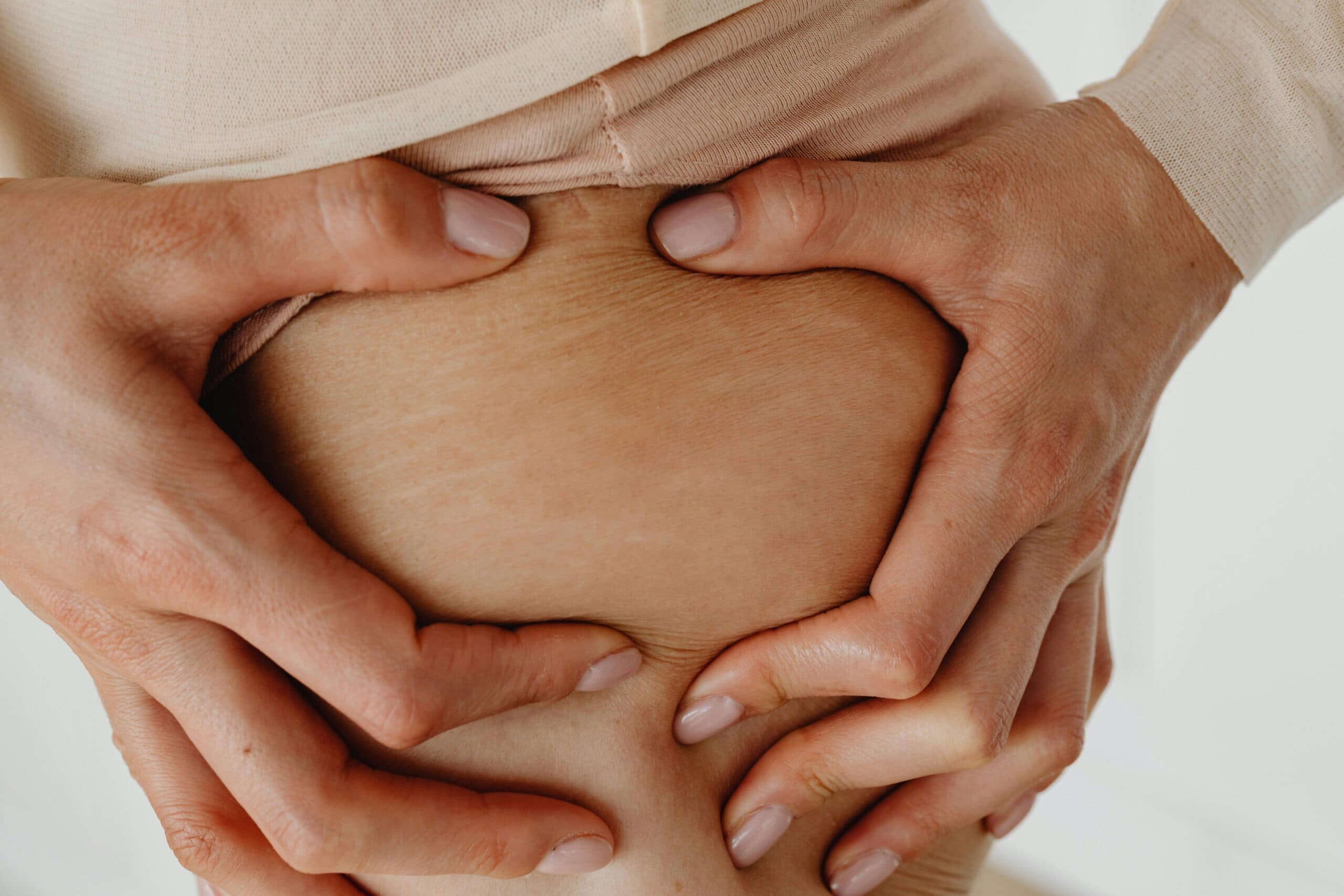
Reduce stretch marks and improve skin texture with cellulite treatment at Skin Medical.
When the dermis layer of the skin is stretched beyond the limits of its natural elasticity it tears and creates visible scars known as stretch marks. Stretch marks commonly occur on the abdomen, the breasts, the hips and buttocks, and the thighs, as these are the areas that typically grow the most during rapid weight gain or pregnancy. However, stretch marks can also occur on other parts of the body, including the chest, arms, and shoulders, if there is more rapid growth than the dermis can handle.
The medical term for stretch marks is striae. The most common type are striae distensae, caused by the skin being distended. Striae gravidarum are stretch marks that occur during pregnancy. Striae rubrae are red or purple stretch marks, and striae albae are stretch marks that have faded to white or silver.

Stretch marks usually occur when the body grows rapidly, such as during puberty, or puts on weight quickly, such as during pregnancy. People who wear tight trousers, or work out with heavy weights, or take anabolic steroids can also experience stretch marks from rapid muscle growth.
The skin has three main layers: the epidermis, a thin, flexible outer layer that protects the body; the dermis, a thicker middle layer with connective tissue, nerve endings, blood vessels, and hair follicle bases; and the hypodermis, also known as the subcutaneous layer, which contains fat and connective tissue for energy storage, cushioning, and insulation. The epidermis and hypodermis are more flexible than the dermis, preventing tearing even when the dermis is strained.
Topical treatments that may help reduce stretch marks include the following. They are applied to the skin, penetrating the epidermis to reach the dermis to take effect:


Our welcoming team are here to guide you through every step of the process. You can reach out to us by email, phone or send us a call back form.
